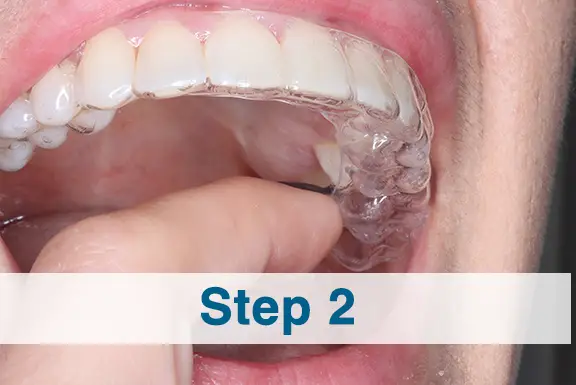
How To Take Care Of Aligners
IT’S EASY.
By addressing these potential problems proactively and seeking guidance from your orthodontist when needed, you can ensure a smoother and more successful orthodontic treatment experience with aligners.
Discomfort and Soreness
Similar to traditional braces, orthodontic aligners can cause discomfort and soreness, especially after initial placement or when switching to a new set of aligners.
- Solution: Over-the-counter pain relievers like ibuprofen can help alleviate discomfort. Soft, cold foods like yogurt or ice cream can soothe sore gums and teeth. If discomfort persists, consult your orthodontist for advice.


Difficulty Removing Aligners
Sometimes, aligners may fit tightly or become difficult to remove, particularly when they are new or after wearing them for an extended period.
- Solution: Use the provided aligner removal tool or fingertips to gently and gradually remove the aligners. Avoid using excessive force, as this can damage the aligners or injure the teeth and gums. If you continue to struggle with removal, consult your orthodontist for assistance.
Speech Impediments
Orthodontic aligners may temporarily affect speech patterns or cause difficulty pronouncing certain sounds until the mouth adjusts to their presence.
- Solution: Practice speaking slowly and enunciating words clearly to adapt to the aligners. Reading aloud or practicing speech exercises can help improve speech clarity over time. If speech issues persist, consult your orthodontist for guidance.
Allergic Reactions
Although rare, some individuals may develop allergic reactions to the materials used in orthodontic aligners, such as plastic polymers.
- Solution: If you experience symptoms such as itching, swelling, or rash around the mouth after wearing aligners, discontinue use and consult your orthodontist immediately. They may need to switch to alternative materials or explore other treatment options.
Poor Fit or Discomfort
In some cases, aligners may not fit properly or may cause discomfort due to improper alignment or manufacturing defects.
- Solution: Contact your orthodontist if you notice any issues with the fit or comfort of your aligners. They may need to adjust the treatment plan, provide replacement aligners, or make other accommodations to ensure optimal comfort and effectiveness.
Cracked or Damaged Aligners
Accidental damage, such as cracking or warping, can occur to aligners, particularly if they are exposed to excessive heat or pressure.
- Solution: Contact your orthodontist immediately if your aligners become damaged. Avoid wearing damaged aligners, as they may not provide the intended treatment and could potentially harm your teeth. Your orthodontist can provide replacement aligners and advise on how to prevent future damage.
Difficulty Eating and Drinking
While aligners are removable, they should be taken out before eating or drinking anything other than water. However, some individuals may find it inconvenient to remove and reinsert aligners frequently throughout the day.
- Solution: Plan meals and snacks around aligner wear, and remove them only when eating or drinking (except water). Practice good oral hygiene by brushing and flossing before reinserting aligners to prevent food particles from becoming trapped. If you struggle with this aspect of aligner treatment, discuss alternative options with your orthodontist.
Gum Irritation
Prolonged wear of aligners or improperly trimmed edges can lead to irritation or sores on the gums.
- Solution: Ensure that aligners are properly trimmed to avoid sharp edges that can irritate the gums. Take breaks from wearing aligners if irritation occurs, and rinse with warm saltwater to promote healing. If irritation persists, consult your orthodontist for evaluation and adjustments.
Tracking Issues
In some cases, teeth may not track properly with the aligners, resulting in delays or complications in treatment progress.
- Solution: Communicate any concerns about tracking issues with your orthodontist promptly. They may need to reassess the treatment plan, provide additional aligners, or make other adjustments to ensure that the teeth move as intended.
Neglected Oral Hygiene
Improper oral hygiene while wearing aligners can lead to plaque buildup, tooth decay, and gum disease.
- Solution: Maintain diligent oral hygiene practices by brushing and flossing after meals and snacks before reinserting aligners. Clean aligners regularly with a soft toothbrush and mild soap or aligner cleaning solution to prevent bacterial growth. Attend regular dental check-ups for professional cleanings and monitoring of oral health.